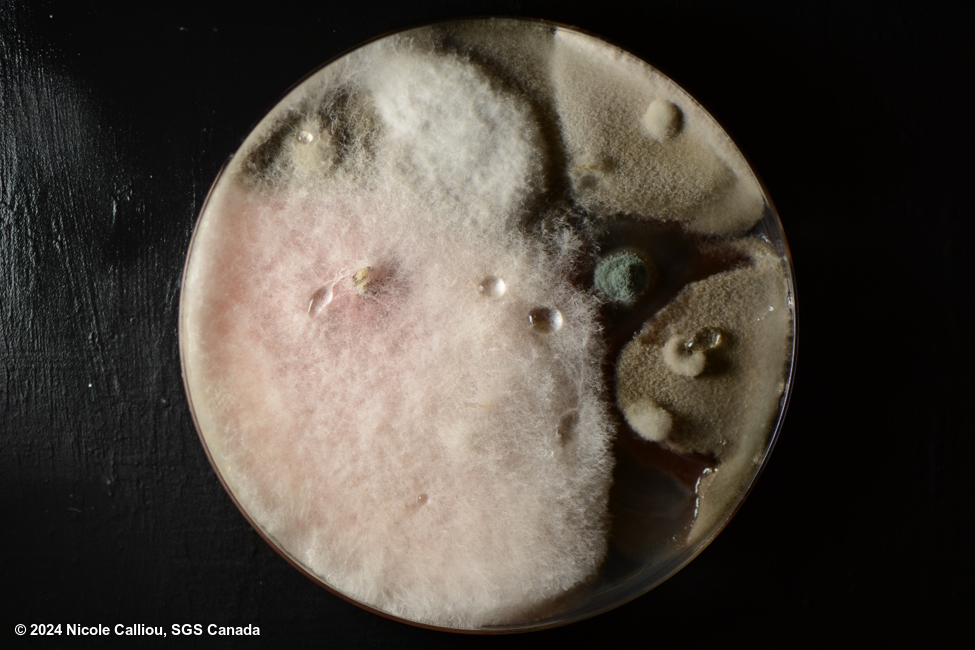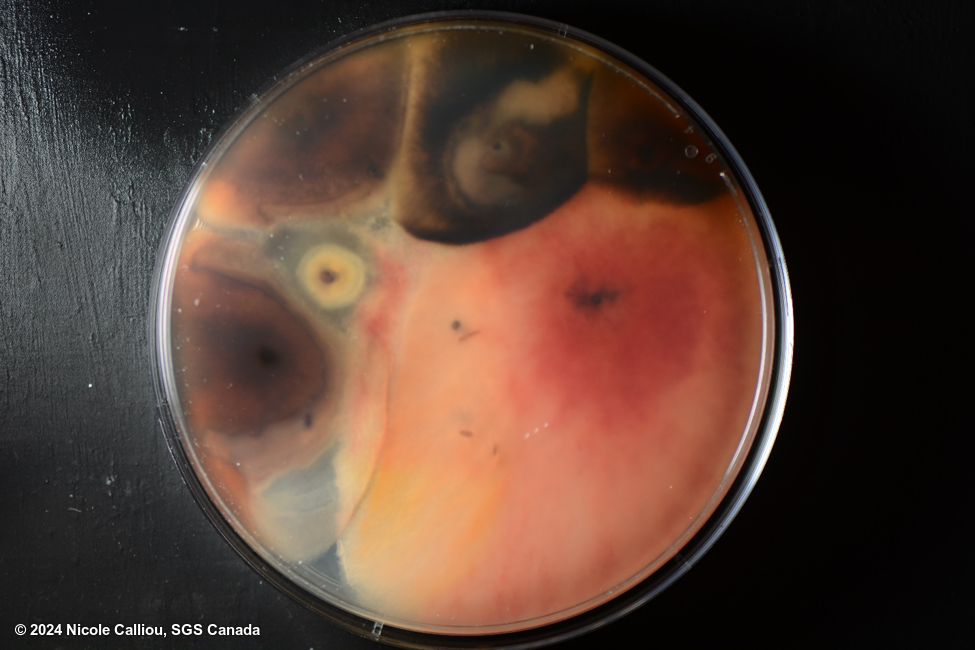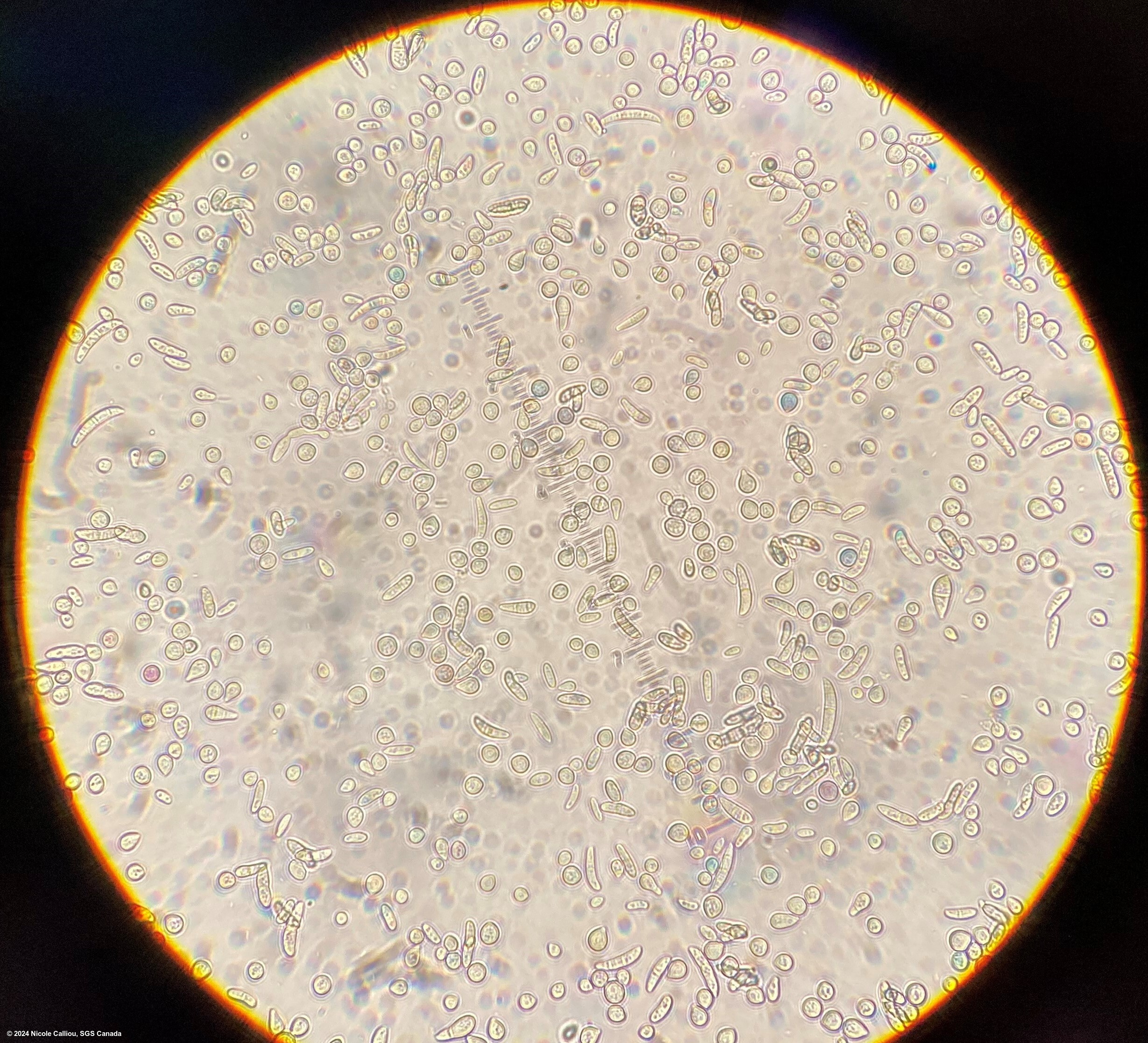Fusarium sporotrichioides
Overview
|
Scientific name
|
Fusarium sporotrichioides |
|
Genus
|
Fusarium |
|
EPPO code
|
FUSASR |
|
Common name
|
Kernel rot of Maize |
|
Synonyms
|
Fusarium sporotrichiella var. sporotrichioides |
Description
On PDA growth is rapid and the aerial mycelium is dense and white to yellow, often with a depressed colony center (not always). Colony can appear white to yellow to reddish from top, and colours will darken with age. Red pigments are produced in the agar, so the under surface is often much darker than the top of the colony. Sporodochia are orange and often appear as the culture ages, and will look wet near the center.
On malt agar, the mycelium is aerial, white to pink, sometimes orange. Sporodochia only appear on older cultures.
Conidiophores: Unbranched and branched monophialides and polyphialides. Colonies can look visually similar to related species (such as Fusarium poae), but the presence of polyphialides is diagnostic to F. sporotrichioides, as is the presence of macroconidia and two types of microconidia.
Macroconidia are abundant, sickle shaped and typically 3-5 septate (predominantly 3-septate).
Microconidia are abundant and present in two forms. 0-septate pyriform microconidia, often with a papilla at the base. And 1-septate oval to pear shaped, also referred to as ellipsoid or fusoid, microconidia are present.
Chlamydospores are present and abundant, formed singly, in chains, or in clumps.


